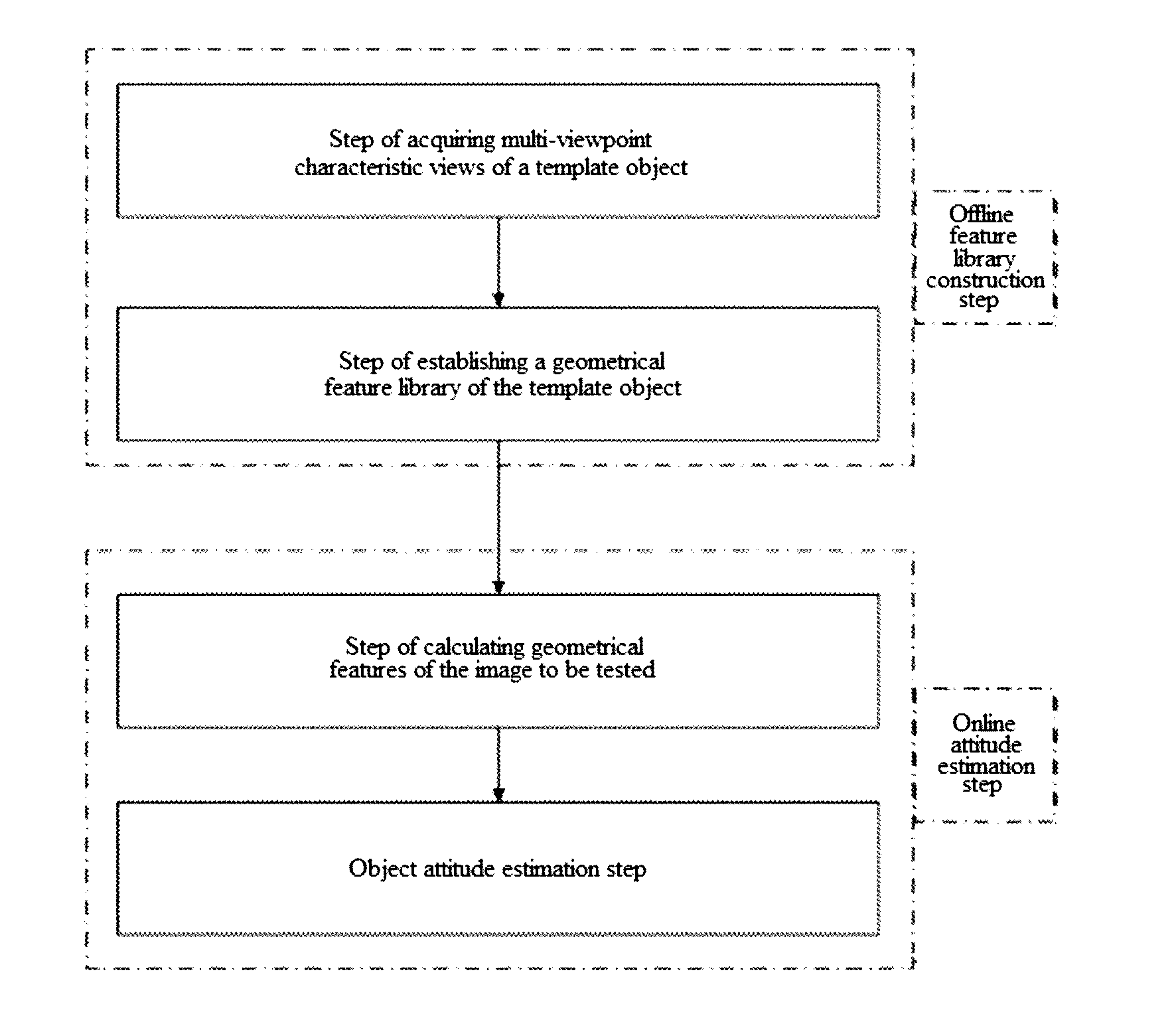Attitude estimation method and system for on-orbit three-dimensional space object under model restraint
a three-dimensional space object and orbit estimation technology, applied in the field of space technology and pattern recognition, can solve the problems of blurred object boundary, limited spatial resolution of ground-based telescope system, and the precision of algorithm severely depends on the precision of edges, straight lines, angular points, etc., and achieves desirable robustness, high matching precision, and simple implementation
- Summary
- Abstract
- Description
- Claims
- Application Information
AI Technical Summary
Benefits of technology
Problems solved by technology
Method used
Image
Examples
Embodiment Construction
[0076]To make the objectives, technical solutions, and advantages of the present invention clearer and more comprehensible, the present invention is further described below in detail with reference to the accompanying drawings and the embodiments. It should be understood that the specific embodiments described here are merely used to explain the present invention rather than to limit the present invention. In addition, the technical features involved in the implementation manners of the present invention described below can be combined with each other as long as the technical features do not conflict with each other.
[0077]In the present invention, an on-orbit three-dimensional space object is an on-orbit Hubble telescope, and the structure of a satellite platform of the Hubble telescope is a cylinder. Two rectangular solar panels are mainly carried on the satellite platform, and an object attitude that needs to be estimated refers to an attitude of the satellite platform in the thre...
PUM
 Login to View More
Login to View More Abstract
Description
Claims
Application Information
 Login to View More
Login to View More - R&D
- Intellectual Property
- Life Sciences
- Materials
- Tech Scout
- Unparalleled Data Quality
- Higher Quality Content
- 60% Fewer Hallucinations
Browse by: Latest US Patents, China's latest patents, Technical Efficacy Thesaurus, Application Domain, Technology Topic, Popular Technical Reports.
© 2025 PatSnap. All rights reserved.Legal|Privacy policy|Modern Slavery Act Transparency Statement|Sitemap|About US| Contact US: help@patsnap.com



